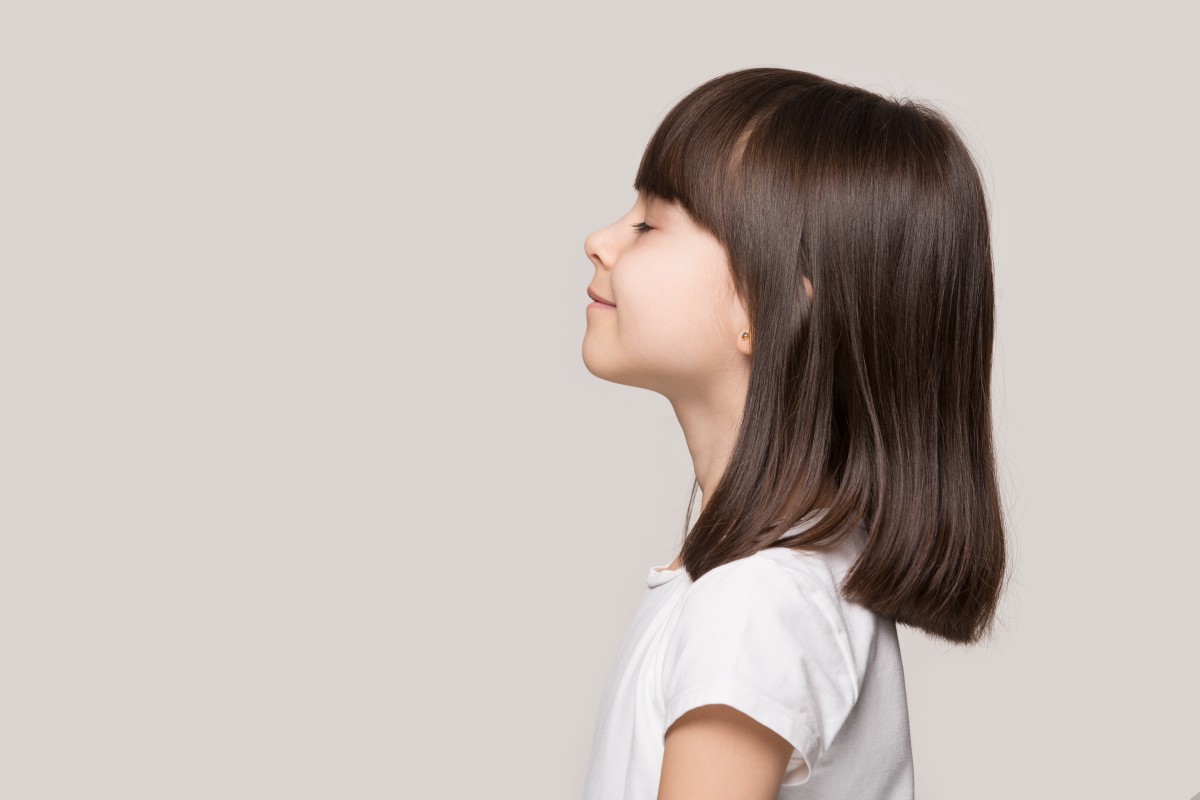Reading time: 4 minutes Children are exposed to many stimuli in their social environment. Excessive media consumption in combination with little exercise easily leads to sensory overload and stress. A break in the form of Snoezelen helps children to process their everyday sensory impressions and to come to rest again.

How children learn to relax with Snoezelen
Snoezelen was around 1970 in the Netherlands as a form of therapy
developed for people with disabilities. Two Dutch civilian service providers set up their own room, in which the people concerned could process their daily sensory impressions without disturbance.
The name Snoezelen is made up of the Dutch words "snuffelen" (sniff, sniff) and "doezelen" (doze). The German pronunciation is "snuh-se-len" or "snuh-seln.
How does Snoezelen work?
Simply put, Snoezelen is about relaxing in a discreetly furnished feel-good room. This Snoezelen room is designed for the senses and often in white. A subdued light, relaxation music and aroma fragrances intensify the pleasant atmosphere and specifically address the senses: seeing, hearing, smelling, touching and (rather rarely) tasting.
The conscious perception of these stimuli helps to process stress and relax. First and foremost, Snoezelen is about dreamily leaving everyday life behind.
Snoezelen for children
Children are flooded with stimuli every day. Even kindergarten children are under time pressure, which is often forced by a demanding leisure program. In our fast-paced world, the children have little space or time to simply dream and indulge in their own fantasy world.
As a possible consequence of this hectic pace, the children are nervous, over the top or aggressive. Snoezelen helps children to simply switch off and let their imaginations roam. The pleasant feel-good atmosphere conveys warmth and security to the children.
When does your child need time out??
Every child reacts differently to sensory impressions and stress. Typical signs of an overload are poor concentration and headache and abdominal pain. If a child often has abdominal pain without a striking medical report, the hectic pace of everyday life can be behind it. But even if your child is very over the top and heavy comes to rest, Snoezelen can help.
How to set up a Snoezel corner
Set up a Snoezel corner in the apartment. The master bedroom, for example, is ideal for this, since it is usually furnished with little charm. In addition, the room can be darkened well. You need a mattress or a soft sports mat as a base mat. With cushions and blankets you can quickly create a cozy atmosphere.
When you set up a tent or a beach shell, the limited space also gives a feeling of security. A lamp with subdued light, fairy lights or a color changing spotlight can be used as lighting. A device with a dimming function and different speeds is ideal. When setting up the Snoezel corner, you should definitely take your child’s individual preferences into account, because they should feel comfortable.
How to prepare your child for Snoezelen
Put on loose clothes and thick socks for your child. The room with the Snoezel corner is darkened and the atmospheric lighting is switched on. If your child likes, play relaxation music. Perhaps your child is more enthusiastic about a relaxation CD with sounds of nature or animals. If your child likes beautiful scents, light an aroma lamp.
How to snoezelen with your child
Once the right feel-good atmosphere has been created, you can tell or read a story to the child, for example. Fantasy trips that invite you to dream or relax the children are particularly suitable. Or you can massage your child or play awareness games. Whatever you do, stay calm and relaxed.
Also try to relax and enjoy the break from everyday life. With Snoezelen you do not run any programs. Instead, you can dream together with the child in a relaxed situation and "waste time".
So that children do not get bored, vary the process. Always take your child’s needs into account. Depending on the child’s wishes, it can snoezelen for half to three quarters of an hour. Do not abruptly end the break. Announce the end and ask your child to stretch and stretch extensively. If it likes, it can slowly sit up. Talk a little about the emotional experience.
Snoezelen with all your senses
We perceive our environment with all our senses. Especially small Children are often flooded by the multitude of impressions. Snoezelen counteracts this overstimulation because the senses are addressed as individually as possible. The child also has peace and plenty of time to process these impressions.
Visual perception / seeing
We perceive most of the information through the eyes. Address the sense of sight by experimenting with different colors. A colored cloth over the sleeping table lamp can offer new charms. For example, blue and green colors have a harmonizing effect.
Maybe your child can switch off better if a color changing spotlight conjures up colorful lights on the wall. The child may also be overwhelmed by the sensory impressions. If it can’t relax, switch to quieter light sources.
Tactile perception / buttons
The skin is the largest organ of perception in humans. Give your child a feeling of security with gentle touches such as massages. Or the child actively perceives objects using his sense of touch. For the Snoezel corner there are both exciting objects such as a hedgehog ball or soft materials such as cuddly pillows.
Acoustic perception / hearing
Music, recited stories or sounds influence our mood. For example, if you read a story in a calm voice, your child automatically begins to relax. Sound effects or relaxation music can also cause this effect.
Olfactory perception / smell
Fragrances also affect our moods and well-being. Most essential oils for the aroma lamp affect our organism. Anise, chamomile and lavender, for example, have a harmonizing and relaxing effect.
Gustatory perception / taste
The sense of taste is rarely addressed in Snoezelen. You can end the time-out by giving your child freshly squeezed juice or slices of fruit and vegetables.
Photo credit: fizkes / stock.adobe.com
PS: Quality management is important to us!
Please let us know how you like our contribution. To do this, click on the asterisks shown below (5 asterisks = very good):
RELATED ITEMS
-

How babies learn to speak – language development in children
In the beginning was the Word? Well, actually there was more of a juicy scream. A baby’s speech development begins the moment it is born…
-

Learn to speak: how babies prepare – baby and family
The toddler sees a car and speaks his first word: car. But what happened before? Experts explain how foundation stones for…
-

ADHD and school – support, learning, teacher talks
ADHD, possibly combined with learning difficulties and developmental delays, quickly lead to frustration, fear of failure, and annoying…
-

Learn to write: "Care for parents understandable but unfounded"
The discussion about the best way to learn to write divides entire generations of parents and educators. Are there right and wrong methods? We…
